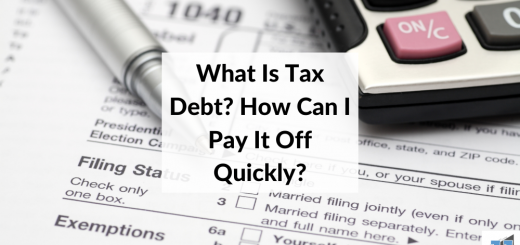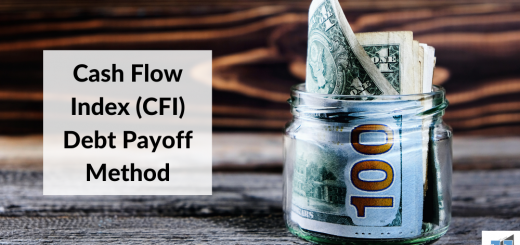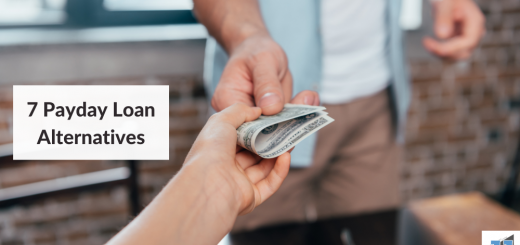What Is the Debt Hybrid Payoff Method?
When you are paying off debt, deciding between the debt snowball method and the debt avalanche method can be difficult. But what if you didn’t have to choose?
This is where the debt hybrid payoff method comes in. With this debt repayment strategy, you can pay off your debt effectively while experiencing victories to help you stay motivated along the way.
Let’s explore the debt hybrid payoff method, a unique payoff solution available on Undebt.it.
What Is the Debt Hybrid Payoff Method?
The debt hybrid payoff method lets you take the strengths of the debt snowball and debt avalanche, giving you the best of both worlds.
With the ability to experience small wins along the way, the debt snowball method is popular among many people who are paying off debt. Also popular, the debt avalanche method allows you to pay off your debt efficiently by focusing on the highest interest rates first.
Fortunately, these strategies don’t have to be mutually exclusive. The debt hybrid payoff method combines the power of small victories and effective payments to maintain motivation while quickly eliminating debt.
How the Debt Hybrid Method Incorporates the Debt Snowball
The debt snowball method is an approach where you focus on your smallest debt first. With each small debt you eliminate, you can move on and tackle a larger debt until you’ve paid off all your debt.
The benefit of the debt snowball method is that you’ll experience small victories along the way, helping you stay motivated. However, the drawback is that you might miss an opportunity to avoid high interest payments. As a result, the debt snowball method may not be the most efficient repayment solution.
The debt hybrid method incorporates the power of small wins. Instead of solely focusing on debt repayment based on interest rates, it also builds in small victories along the way to maintain your motivation.
Related: What is the debt snowball?
How the Debt Hybrid Method Incorporates the Debt Avalanche
The debt avalanche method focuses on your debt with the highest interest rate first. By prioritizing the most expensive debt, you will save money throughout your debt payoff journey.
Not only will the debt avalanche method allow you to save money, but it will save you time on your debt payment journey. The biggest drawback of the debt avalanche strategy is that you’ll miss out on the small wins offered by the debt snowball method. This lack of small victories along the way can make it more difficult to stick to your repayment plan.
The debt hybrid method recognizes the importance of tackling high-interest debt first. Instead of focusing only on small victories along the way, it also factors in the numbers when building your debt repayment plan.
Related: Debt Snowball vs. Avalanche
How Can the Hybrid Method Help You Pay Off Debt Quickly?
The debt hybrid payoff method can help bridge the gap between the snowball and avalanche methods. Instead of forcing you to choose between small victories and efficient payments, it combines the power of both.
This payoff strategy creates more uniform gaps between victories to maintain your motivation. It also allows you to save money over the course of your debt payment journey by eliminating high-interest debt.
The hybrid method works by calculating a debt to interest ratio for each of your outstanding accounts. Here’s what the formula looks like:
Account balance / Current interest rate = Debt to interest ratio
For example, if you have an account with a balance of $10,000 and an interest rate of 12%, the debt-to-interest ratio is 833 ($10,000 / 12 = 833.33). Please note that the formula states “current” interest rate. This means that the formula takes promotional interest rates into consideration.
Once you’ve calculated the debt to interest ratio for each of your debts, the account with the lowest debt ratio gets paid first. After you pay off the account with the lowest debt ratio, you can move on to the next lowest debt ratio.
The goal is to minimize your interest payments while spreading out your victories to maintain your motivation.
The Debt Hybrid Payoff Method in Action
Let’s look at an example to see how this payoff method could help you eliminate your debt. We’ll start with four different accounts and compare the snowball, avalanche, and hybrid methods.
In this example, your monthly budget for debt repayment is $1,000, and your debt payoff journey begins in March of 2021. Here are the debts you are working with:
| Debt Account | Interest Rate | Minimum Monthly Payment |
| $3,000 student loan | 4% | $35 |
| $6,000 credit card | 16.5% | $120 |
| $8,000 auto loan | 5% | $175 |
| $13,000 line of credit | 10% | $260 |
Snowball method
| Debt Account | Total Payments | Interest Paid | Months to Payoff | Payoff Date |
| Student loan | $3,038.16 | $39.39 @ 4% | 7 | September 2021 |
| Credit card | $7,030.36 | $1,036.73 @ 16.5% | 18 | August 2022 |
| Auto loan | $8,597.69 | $598.28 @ 5% | 26 | April 2023 |
| Line of credit | $15,692.04 | $2,695.03 @ 10% | 35 | January 2024 |
| Total | $34,358.25 | $4,349.53 |
The debt snowball method pays the account with the lowest balance first, so the student loan gets repayment priority even though it has the lowest interest rate. The first victory happens quickly at seven months, but the next one takes place almost a full year later at 18 months. The average gap between victories is 8.75 months.
Debt Avalanche
| Debt Account | Total Payments | Interest Paid | Months to Payoff | Payoff Date |
| Credit card | $6,564.72 | $567.53 @ 16.5% | 13 | March 2022 |
| Line of credit | $14,993.25 | $1,995.15 @ 10% | 28 | June 2023 |
| Auto loan | $8,730.53 | $732.09 @ 5% | 32 | October 2023 |
| Student loan | $3,282.48 | $284.38 @ 4% | 34 | December 2023 |
| Total | $33,570.98 | $3,578.15 |
The debt avalanche method pays the account with the highest interest first, so the credit card is prioritized due to its high interest rate. It will take 13 months to pay off that account, but you will save almost $800 in interest versus the snowball method. The average gap between victories is 8.5 months.
Debt Hybrid Payoff Method
| Debt Account | Total Payments | Interest Paid | Debt Ratio | Months to Payoff | Payoff Date |
| Credit card | $6,564.72 | $567.53 @ 16.5% | 363.63 | 13 | March 2022 |
| Student loan | $3,143.50 | $143.84 @ 4% | 750 | 18 | August 2022 |
| Line of credit | $15,287.04 | $2,289.08 @ 10% | 1,300 | 31 | September 2023 |
| Auto loan | $8,766.21 | $769.38 @ 5% | 1,600 | 34 | December 2023 |
| Total | $33,671.47 | $3,769.83 |
The debt-to-interest ratio plan starts off the same as the avalanche by paying off the high interest credit card first. The average gap between victories is also 8.5 months, but the second victory takes place five months later versus 15 months later with the avalanche method. In turn, this can help you maintain your motivation.
This plan will cost you approximately $200 more in interest than the avalanche method and will finish in the same month. Additionally, the payoff victories are spread out a little more. This may help you stay motivated.
Who Should Use the Debt Hybrid Method?
With the debt hybrid method, you no longer have to choose between small victories or minimizing interest payments. Instead, you can take advantage of both features.
As a result, it could be the ideal option for you as you continue your debt repayment journey. By providing the right balance between meaningful victories and financial efficiency, the debt hybrid payoff method is a serious contender for anyone exploring their debt repayment options.
The Bottom Line
The debt hybrid payoff method helps you balance motivational wins with reducing interest payments. It’s a win-win!
Want to use the debt hybrid method? Undebt.it has you covered.
You can use this method through Undebt.it with either a free or paid account. Create a new account with Undebt.it today!



